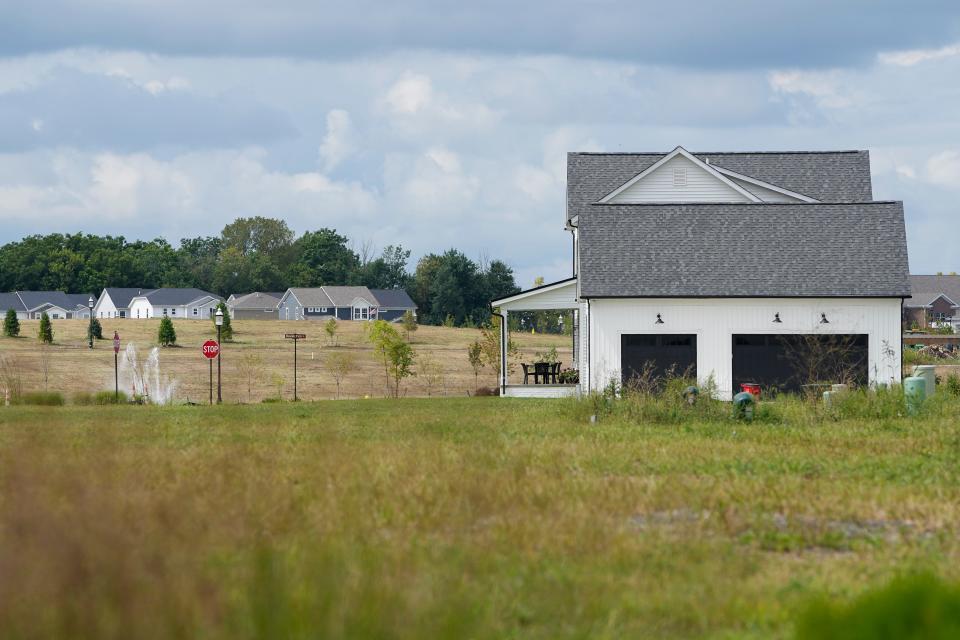Columbus area needs to double housing construction to meet demand, report finds

Greater Columbus needs to double home construction over the next decade to meet demand, according to a new report that reinforces previous concerns about a severe shortage of homes ahead in the region.
Funded by the Building Industry Association of Central Ohio, the report concluded that 14,000 to 19,000 homes should be built each year instead of the 8,000 to 9,000 the region has added annually over the past decade. If construction doesn't rise to meet demand, home prices and rents will continue to dramatically outpace income growth, the report warns.
"Clearly, if historical building permit activity continues, the region will not meet the housing need based on the anticipated job growth projections through year 2032," concluded the report, prepared by the Columbus real-estate research firm Vogt Strategic Insights.
The report updates and reinforces a 2018 report funded by the BIA of Central Ohio.
"This confirmed our fears, that this problem would compound," said Jon Melchi, executive director of the builders' association. "We need to continue to build more units because we’re seeing more continued growth throughout the region."
Housing in Greater Columbus: Intel to push growing demand even higher
Vogt Strategic Insights based its new forecast largely on job growth, which drives demand for housing. The researchers estimated that the 10-county Greater Columbus region will add 145,000 to 202,000 jobs over the next decade (through 2032). Since each new job roughly requires one new home, at least 14,000 new homes (including apartments and condominiums) would be needed each year.
Instead, the region has been adding an average of 8,327 homes a year over the past decade.
"Based on our estimates, permitting activity needs to increase by approximately two-fold from recent trends over the past decade to meet the projected housing need over the next decade," concluded the report.
Kerstin Carr, senior director of planning at the Mid-Ohio Regional Planning Commission, has not seen the report yet, but said its findings appear to "demonstrate there is an even stronger need for building houses more quickly."
Carr noted that demand will only accelerate with Intel's construction of semiconductor factories in Licking County.
Unless home construction rises, housing will only cost more, she said.
"We run into the danger of our housing prices going up more and more, and essentially pricing people out of communities and neighborhoods," Carr said.
Home prices have already risen far faster than household income in Greater Columbus. The BIA study found that central Ohio home prices have risen about 10% a year over the past five years, while incomes have risen 2% to 3% a year.
Affordable apartments needed in Columbus area
According to another recent report, full-time workers in Ohio need to earn at least $17.05 an hour to afford a decent two-bedroom apartment in the state, and workers in Columbus and nearby Union County need to make at least $3 more per hour.
The new BIA report finds that affordable apartments will especially be in demand. About 30,000 apartments will be needed over the next decade for households making less than $50,000 a year, while another 20,000 will be needed for households that earn $50,000 to $75,000 annually.
On the other end, researchers also forecast a shortage of higher-end homes. The report concluded that about 42,000 single-family homes will be needed for households earning more than $150,000 a year.
The report doesn't include recommendations on how to boost production. Melchi said the biggest obstacles to building more homes are a lack of sewer and water lines, and municipal plans that limit housing variety.
"Land-use plans have to reflect the market, which is different than it looked like in the 1990s when many of these (municipal plans) were drafted," Melchi said. "We’ve seen a trend of 20-plus years of lot sizes getting smaller in single-family developments, and many land-use plans don’t reflect that. ... And allowing multiple types of products in developments is a trend that many land-use plans don't allow."
Carr agreed that municipalities should look to expand housing options.
"I would like to see more openness to new and innovative building techniques and building products, so people have more choices for how they want to live," she said.
Carr cited as examples "more accessible dwelling units, mother-in-law apartments, more denser mixed-use developments, smaller footprints of single-family units like cottage homes, and new building materials such as 3D building techniques."
jweiker@dispatch.com
@JimWeiker
,
;
This article originally appeared on The Columbus Dispatch: Columbus area must build more housing as population soars, study finds
